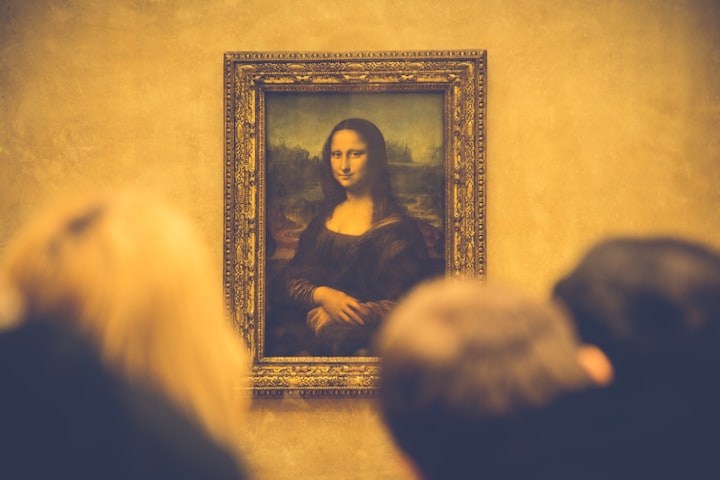The Secret Behind Mona Lisa Painting
The Secret Behind Mona Lisa Painting

Whether it is hundreds of scenarios surrounding the Mona Mona arrival of the Louvre, the 19th-century mythology, or the endless production of works of the 20th and 21st centuries, its natural appeal has made it a world-famous painting. It is possible that the mystery of who sat down, the 1911 theft, and subsequent conspiracy theories put Leonardo da Vinci's painting The Mona Lisa (also known as La Gioconda) in the public mind. The mysterious scenario surrounding the painting in the nineteenth century continues to define it and attract speculation.
Upon examining this famous Renaissance masterpiece, researchers found evidence that Leonardo da Vinci relied on charcoal signatures to lend to his editors. In 2006, scientists from the National Research Foundation of Canada (NRC) used laser-infrared scanning on the drawing to reveal details about it. By darkening the lacquer, they discovered that Mona Lisa was wearing a gauze coat, a garment worn by 16th-century women during pregnancy and after childbirth.
The wife of a Florentine merchant, Lisa del Giocondo, is regarded as a woman in Mona Lisa - one of the greatest paintings in the history of art -.
In addition, Lisa del Giocondo was identified as the subject of this painting in 1503 by an Italian government official named Agostino Vespucci. Some experts believe that Lisa was actually the motif of the painting, which raises doubts about the identity of the women of the Mona Lisa. We end with a woman in Leonardo da Vinci's most famous painting "Mona Lisa" (1503-1519): Lisa Gherardini del GioCondo, a historian who looks at the man behind Leonardo.
According to Artnet News, a British scientist has announced that he has discovered the secret of a smile on the Mona Lisa and is now taking a closer look at a recently discovered image, called La Bella Principessa. The ending focuses on the eyes of the previous painting, a portrait of the illegitimate young daughter of a Milan chief, who has faded away, but the tender smile is still visible. He says the metaphor "When you see it, you can't do it" the image was the intended part of Da Vinci, which he called the "uncontrollable smile" or sfumato process.
When artists talk about the secret of a smile, they refer to the painting as sfumato, made by da Vinci. The effect of the Mona Lisa is achieved by using "sfumato," which means "soft and pale", an Italian process that uses color and shade to create a deceptive lip gloss.
In many paintings, including Leonardo's La Belle Ferronniere, the headlines "eyes seem to move as if the viewer is moving. Art lovers around the world have drawn attention to images, which look smoky and dreamy.
Leonardo achieved this effect through a variety of painting techniques, including sfumato shading, which created a seamless transition between light and shadow. This painting is the first to depict people sitting in an imaginary place, and Leonard was one of the first to use the aerial view. Pascal Cotte, a French scientist who studied Mona Lisa with a smile for more than a decade, says he found the second picture of a woman hidden in the painting.
According to scholar Silvano Vinceti, the letters may represent Da Vinci's first name and the initials of the model sitting next to him. If 7 means "God created us in 7 days," then the two numbers 7 and 2 mean "man" and "woman," then Leonardo DaVinci changed Salai's face into a woman while drawing a Mona Lisa while of the Renaissance, and you don't have to be gay to do so.
Infrared images show that Da Vinci's preparation drawings are placed under layers of paint and paint, indicating that he was human. Transparency Veil suggests you paint landscapes with a transparency process to paint a veil over them.
There are fine lines on the corners of Lisa's mouth, but it's not clear when you see the shadows around her edges. The shadows at the edges are softer than the sfumato layers on his back, which seem to turn him into a subtle smile. When you look at the smile, parts of it disappear in the background.
Staring directly at Lisa's mouth, the retina captures small details and smiling borders. If you take your eyes off her mouth and look at her eyes, cheeks, or another part of the picture, you will see her smile again. But if you take your eyes off Lisa's mouth and look at her eyes, cheeks, or another part of the picture, you will see her smiling again.
Margaret Livingstone, a neurologist at Harvard Medical School studying the human visual system, knew that when she looked directly into Mona Lisa's mouth she was not smiling, even though she was looking straight into her eyes. We have the impression that our eyes look back and look at us, even if we are not standing in front of a painting. When you look directly into Lisa's mouth, your retina captures these tiny details and limitations in the corners of her mouth so she doesn't appear smiling.
Short-term artist Giorgio Vasari Leonardo said they smiled at Lisa del Giocondo, the young wife of a Florentine silk seller, during her paintings. Mayonnaise disturbs the common adjective of Vasari, but it is also misleading. As in other paintings, movements and emotions are paired, and stones that touch Leonardo's art are incorporated.





Comments
There are no comments for this story
Be the first to respond and start the conversation.